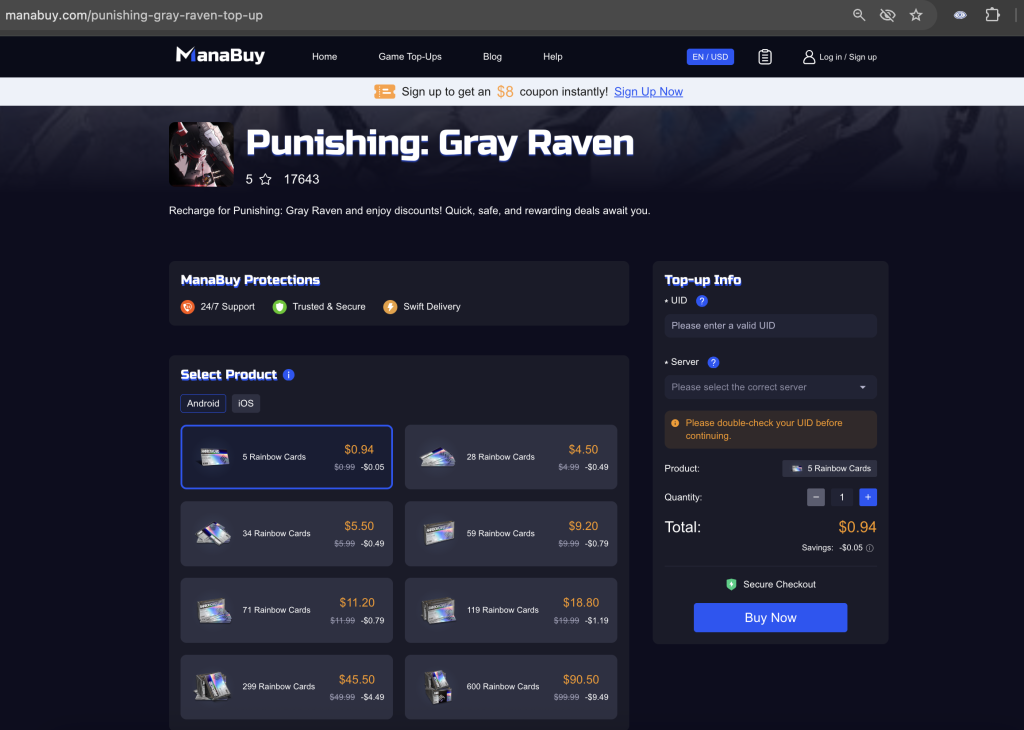From Routine Dailies to 35-Second Boss Clears: How I Stretch Every Resource in Punishing Gray Raven
You don’t need to own every new S-frame that drops to stay competitive in PGR—you need cleaner orb flow, smarter stamina swaps, and a recharge plan that isn’t quietly draining 30% in app-store fees. After pushing both my Lucia : Crimson Abyss and Wanshi : Hypnos to SSS without going broke, here’s the week-to-week system that keeps my damage window steady and my Rainbow Card spending predictable.
Orb Real Estate
A run succeeds or stalls on how many useful orbs you hold when a burst window opens. I build teams so their colors fall neatly into a 15-second loop; my fallback trio is Tenebrion → Crimson Abyss → Eclipse. Kamui vacuums mobs and shreds armor with purple pulls, Lucia converts red orbs into crit chains inside that window, and Liv’s yellow QTE refunds orbs while shielding the crew. The result: nine meaningful pings every rotation and zero orphan orbs clogging the board. If you ever finish a boss phase with two orbs left over, the deck—not your DPS stat—is the real bottleneck.
Gear at the Right Ceiling
Most players leap for a six-star memory the moment it drops, then starve their weapon upgrades for weeks. I run “20-caps”: every Epic memory stops at level 20 for the second stat roll; Legendaries climb only after the wearer hits S-rank. That one rule trims tens of thousands of Cogs a week—funds that go straight into overclocking signature weapons, which add flat attack and crit you can’t get anywhere else. In practice, my mixed 4-/5-star board routinely outdamages friends who rush full Legendary sets because all my stats are actually turned on.
Frame Counting Made Simple
Lab-tested dodge timing sounds hardcore, but the process takes five minutes. Record one fight, scrub to the first hit frame, then buffer your dodge two frames earlier next run. Vera’s double swipe? 28 frames. Rosetta’s furnace slam? 32. Hard-stamping those windows into muscle memory means I’m not burning signature cooldowns recovering from knock-downs—those three seconds of lost burst time matter more than any gear roll.
Blue, Red, Gold Calendar
Kuro’s event schedule runs like clockwork: Resource Maze → Off-Week Prep → New Banner. I color-code a Google sheet:
- Blue for half-cost Constellation draws.
- Red for double-drop days in Resource Maze.
- Gold for Guild Chest resets.
Stamina dumps only happen on red squares; Black Cards only leave my stash on blue ones. Over a full quarter, that discipline delivered 3 200 Black Cards—an entire multi-pull—without a single swipe.
When Topping Up Makes Sense
Eventually the pity counter looms, an S-frame you actually play releases, and your stash is 400 Black Cards short. That’s when I compare math: the in-app store adds tax and platform fees, while the web bundle sheet currently lists 71 Rainbow Cards for $11.20, 119 for $18.80, or the sweet-spot 299 bundle for $45.50—each tier shaving close to a dollar off standard pricing. One trip to the Rainbow Card top-up page gets the currency in my mailbox before the lobby countdown hits five, and because payment travels through Kuro’s own API, first-purchase doubles and event rebates still fire. I bookmark the link as “PGR Quick Reload,” so a banner-day gap never turns into a panic click inside the overpriced mobile shop.

The Resulting Loop
Log in. Clear Intel and War Zone on red-flag stamina days. Record one boss to check if a dodge is late. Stop levelling memories past the breakpoint until the frame itself upgrades. Hold Black Cards until a blue-flag discount lines up with a high-impact Construct. And when the math says “buy,” grab Rainbow Cards through the tax-included portal instead of feeding the platform cut. It isn’t glamorous, but it turns what looks like an endless gacha treadmill into a steady cadence of cleared content, predictable spending, and S-framed satisfaction—no impulse pulls required.